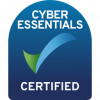How Does IoT Technology Work?
- ,
- , Latest News

We interact with IoT technology every day, but how does IoT work? In this blog, we will be looking at how IoT devices communicate with each other and the key components required for devices to be IoT compatible.
What is IoT Technology?
The Internet of Things, or IoT, refers to the vast range of interrelated computing devices, mechanical and digital machines with unique identifiers, or UIDs, that are able to connect to the internet and collect and share data among themselves without the need for human input.
While many IoT devices still have user interface functionality, they are capable of machine learning which allows them to respond to the data they collect via the sensors and mini-computer processors in the device.
Smartphones, smart security systems, smart thermostats, medical sensors, doorbell cameras, Amazon Alexa and Google Home are all examples of IoT devices.
By the end of 2020, there were 11.3 billion connected IoT devices globally, and that number is still increasing.
How does IoT work?
IoT devices work by collecting data from their surroundings and communicating that information to another device, such as a smartphone, via the cloud. IoT devices use real-time analytics, machine learning, commodity sensors and embedded systems in conjunction with wireless sensor networks, control systems and automation.
First, the devices collect data from their surroundings using in-built sensors. Depending on the device, this data could be a temperature reading, a video feed, location tracking, or an audio cue. Some devices, such as smartphones use multiple sensors for their full functionality.
This collected data is then sent to the cloud through a network connection, which could be via ethernet Wi-Fi, Bluetooth, a mobile/cellular network, satellite, or low-power wide-area networks (LPWAN). The right type of network for a device depends on the required bandwidth and range for the data to reach the cloud.
The data is then processed to identify whether that data is cause for action. For example, a temperature reading outside of acceptable values will need to be lowered or raised, activity detected on a camera may be cause for notifying the user or the relevant authorities, or stock levels below a certain threshold will be a reason to automatically place a repeat order.
If the data is cause for action, some IoT devices can take that action automatically or, in other cases, the results of the processed data are sent to a user interface device, such as a smartphone, where the user can action those changes themselves.
What are the key components needed for an IoT compatible device?
Sensors – The type of sensors used in IoT devices vary depending on the data that needs to be collected and a device may use more than one type of sensor. Cameras, GPS, accelerometers and temperature sensors are all examples.
View our range of Sensors
Antenna – Antennas are a fundamental component of any wireless RF solution. All wireless RF applications rely on antennas for end-to-end communication. The quality of the antenna is critical to the correct operation of any wireless system.
View our range of Antennas
Modems – Modems allow an easy connection for remote devices over the internet. They can be configured to detect the cellular network provider, signal strength, and perform a complete network survey to establish the optimum network for the location.
View our range of Modems
Network Analysers – These components analyse all cellular signals from any network at any site being surveyed and displays the results.
View our range of Network Analysers
Routers – Routers are designed to connect remote devices over Ethernet LAN to the internet.
View our range of Routers
Hopefully, you are now better informed as to how IoT technology works. As we interact with IoT devices every day, and the prevalence of them in our society is only increasing, it’s useful to understand what makes this technology possible! You can browse our full range of IoT products here.




